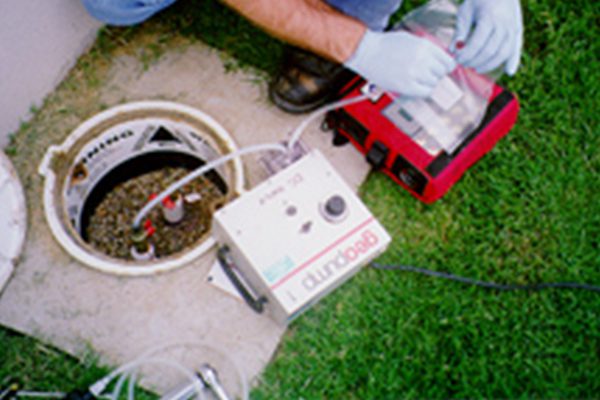
WE’RE HIRING!
Field Environmental Engineer LCA Environmental, Inc. Farmers Branch, TX On-site Work involves environmental engineering in the disciplines of water, wastewater, transportation, and general infrastructure. Engineering degree from ABET accredited university. E.I.T....

LCA Environmental awarded the first statewide contract from the TEXAS RAILROAD COMMISSION for abandoned mine land reclamation
Farmer’s Branch, TX LCA Environmental has been awarded the first statewide contract from the Texas Railroad Commission for Abandoned Mine Land reclamation. The work involves identification, investigation, surveying, and remediation/restoration of abandoned coal mines...

Environmental Infrastructure for Cities
Environmental infrastructure is sometimes invisible to the general public, but it underpins the economy and quality of life in the cities where most people live. Our natural ecosystems provide many benefits for human health and well-being, such as filtering water,...

What’s the Worst Type of Soil to Build On?
Where there's a will--and an adequate budget--there's a way. However, regarding construction foundations, certain soils will require a lot more will, and a lot more budget, than others. How Are Soils Classified? Various professions need to work with and understand...

Infrastructure Crisis? What Are You Maniacs Talking About?
LCA's very own, Dr. Mark Boyd, PE, M.ASCE, chaired the 2021 Texas Infrastructure Report Card Committee. In a series of articles written for Texas ASCE, he share his own infrastructure journey and gives a breakdown of the Report card. Infrastructure is a critical issue...

WE’RE HIRING!
Field Environmental Engineer LCA Environmental, Inc. Farmers Branch, TX On-site Work involves environmental engineering in the disciplines of water, wastewater, transportation, and general infrastructure. Engineering degree from ABET accredited university. E.I.T....

LCA Environmental awarded the first statewide contract from the TEXAS RAILROAD COMMISSION for abandoned mine land reclamation
Farmer’s Branch, TX LCA Environmental has been awarded the first statewide contract from the Texas Railroad Commission for Abandoned Mine Land reclamation. The work involves identification, investigation, surveying, and remediation/restoration of abandoned coal mines...
In addition to pre- acquisition environmental due diligence, Phase 1 Environmental Site Assessments (ESAs), our environmental engineers and scientists are skilled experts in the environmental business risk evaluation of commercial property. We perform environmental site testing, also known as site assessments, to evaluate land safety. This type of testing is especially important when the land under assessment previously had a business or facility on it that produced, transported or used hazardous substances. With testing, a potential buyer might learn that the long term cost of an available property is a lot higher than the market price because of costs related to contamination and hazardous material remediation. Avoiding hidden costs is only one way that these tests benefit parties interested in land acquisition.
Here are the four main benefits of environmental site testing:
Protects a Potential Buyer From Liability
More than four decades ago, U.S. courts decided via the Comprehensive Environmental Response, Compensation and Liability Act of 1980 (CERCLA or Superfund) that landowners and invested land users must remedy hazards on their properties even if they didn’t create them or cause related environmental damage. The courts made direct owners, lenders and leaseholders liable for remediation to prevent harm to humans and animals and restore the land.
Yet, the courts also provided a provision that protects these groups. The “innocent landowner” (ILO) defense redirects liability in the event that a member of one of these groups invested in strategies before purchase or lease to confirm that the land was either safe or within their ability to clean up. A Phase 1 Environmental Site Assessment (ESA) reveals environmental problems. It can help a potential buyer decide whether they’re prepared to take on responsibility for any necessary cleanup. Additionally, if initial tests come back fine and later assessments performed after the sale for any reason find an environmental hazard, the new owner can argue in their defense that they performed their due diligence as a reasonable and prudent person and had no knowledge of the contamination of their property.
Provides a Clear Remediation Cost Analysis
In the event that Phase 1 ESA research reveals evidence of likely environmental hazards, subsequent assessments and related tests (Phase II, Phase III and Phase IV) can help a potential buyer learn how much they’re likely to pay, in addition to the cost of purchasing the property, for professional land remediation. As a result, a potential buyer can compare costs and determine if the property is worth their money and time. Phase II can tell them if the property has soil, groundwater or surface water contamination. Phase III can further outline the extent of the problem and provide cost estimates. Phase IV can design a cost-effective plan for cleanup based on those estimates.
Gives a Potential Buyer a Powerful Negotiating Tool
If an ESA report determines the presence of one or more hazards, then a potential buyer has leverage to attempt to negotiate a lower cost with the seller by pointing out the severity of the issues and the remediation costs they would take on in the event that they purchased the property. These types of tests are similar to housing inspections when it comes to the leverage they provide buyers. A potential buyer of a home, for example, hires an inspector to make certain that they’re not about to buy a money pit. If they discover serious, expensive problems through an inspection, it’s then their decision to either walk away from the property or purchase it. If they decide the latter, they have every right to use what they’ve learned to attempt to procure the property at a lower price. Buyers who represent real estate, development, rental, commercial, organizational, agency, transportation, educational and other interests can do the same with their ESA reports.
Reveals Contamination to Authorities
If any contamination poses an immediate threat to public health, safety or the environment then the property owner and the environmental engineering firm that performed the assessments are expected to report the problem to authorities. Some states don’t require reporting of test results. That said, several federal agencies do investigate cases of non-reporting and hold accountable property owners and others who knew about a health and safety threat and did nothing. Each state’s rules differ in relation to the extent of the penalties for withholding this type of information. Since some hazards cause cancer, damage to the central nervous system and other serious health problems, environmental site testing and reporting to agencies is critical to revealing hazards to public health on private and commercial properties.
Our professional team at LCA Environmental works with experts in many disciplines around the state and country to investigate property contamination and develop remediation solutions. We also provide natural resources management. For more information, contact our experienced team today.


